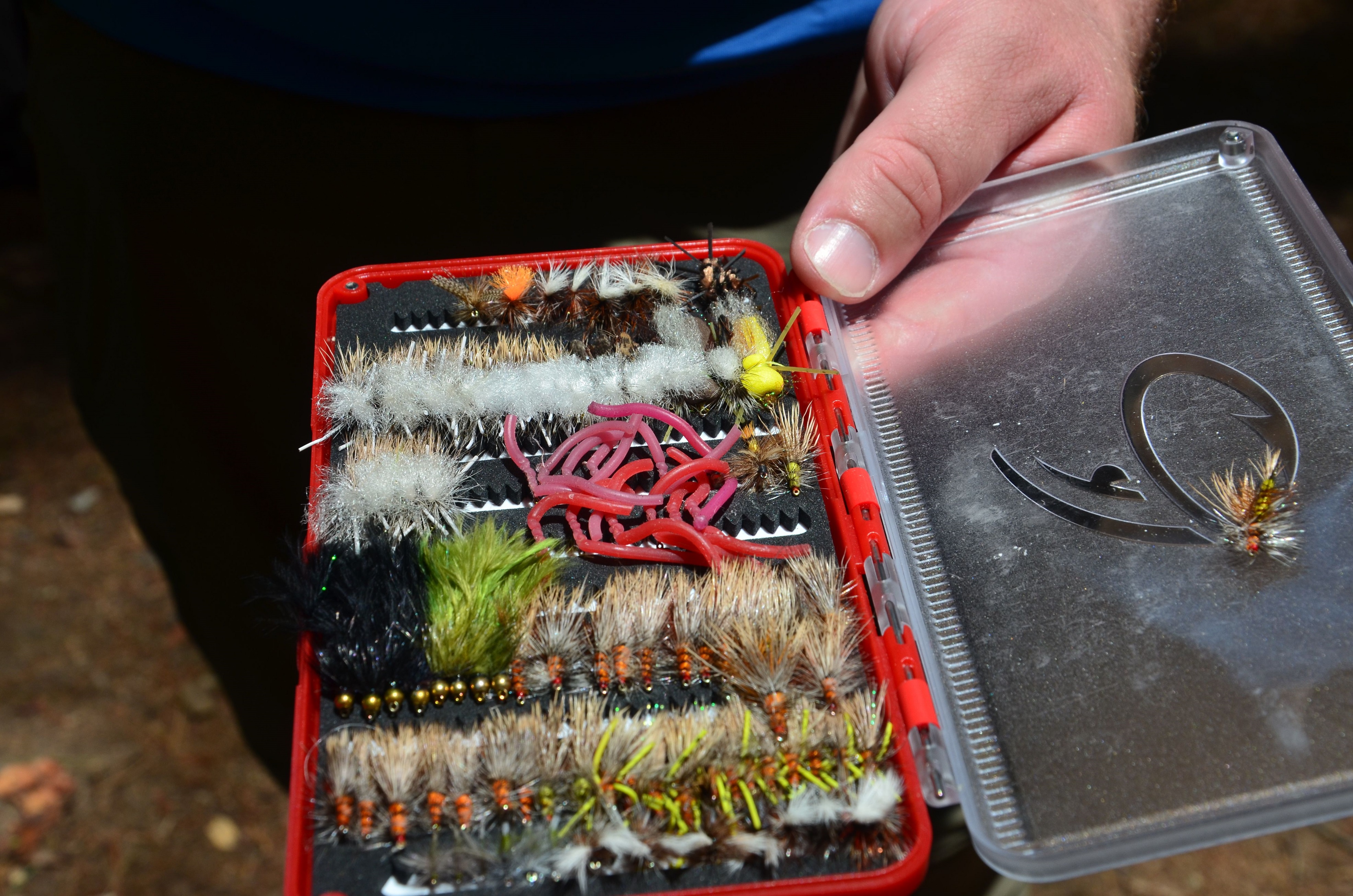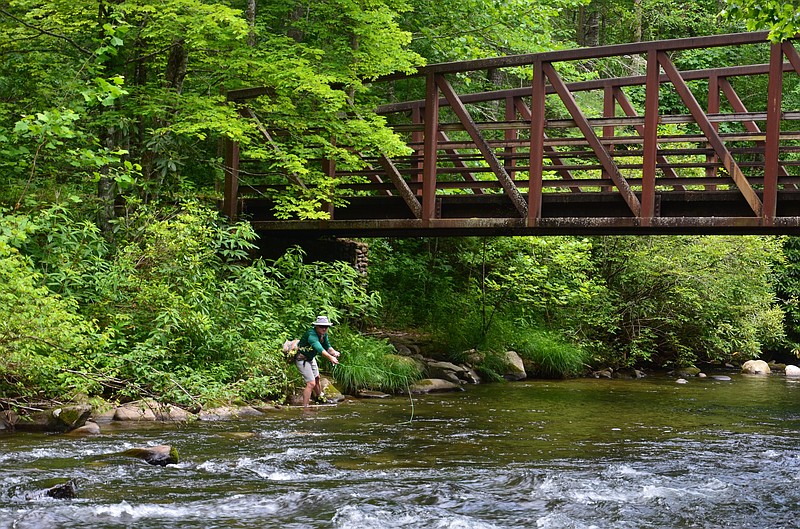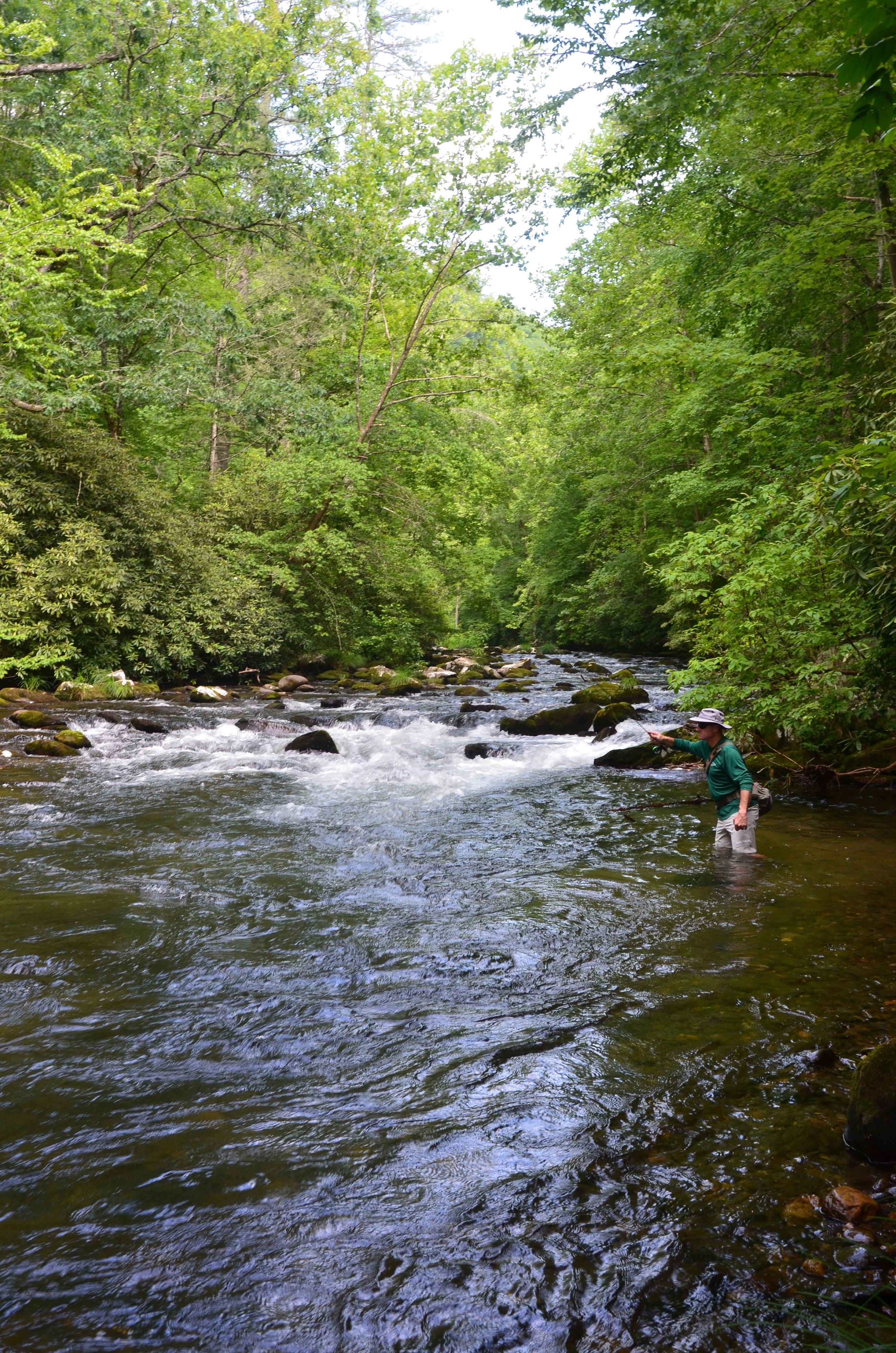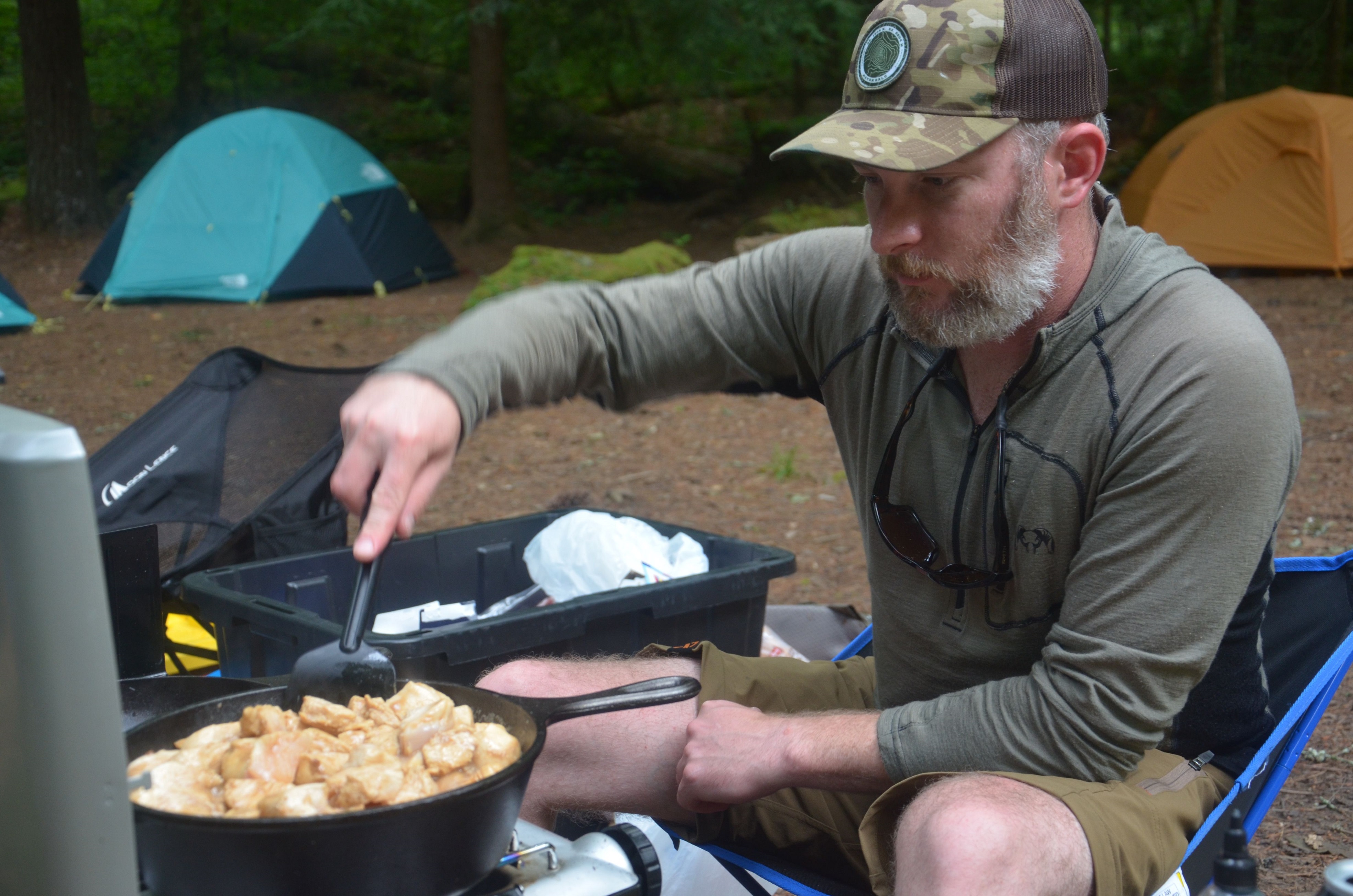It's amazing how quickly nature reclaims an abandoned place. Along steep wooded slopes, the ruins and refuse of a once-bustling lumber town lie hidden beneath dense summer growth. The high green canopy casts a shadow across the valley and creek, where wild trout ride clear flows in the current shade of a twisted steel train rail.
If you look, the evidence of Proctor, N.C. is everywhere at Hazel Creek. Human debris melds into the natural landscape. Nearly 80 years ago, Proctor was abandoned with the construction of Fontana Dam on the Little Tennessee River. The National Park Service upkeeps the town's graveyard and the 1920s era Calhoun House. Other than that, the remains of the town are scattered brick, metal, concrete and stone.
The wide gravel trail was once Calico Street, Proctor's main drag. It climbs the valley at a gradual slope, paralleling the creek for 15 or more miles through the Great Smoky Mountains National Park to the Appalachian Trail near Clingmans Dome. In places, old brickwork peeks through the trail dirt as tightly masoned as it was a century ago. The cavernous ruins of a giant lumber mill are barely visible through the trees less than 100 yards off the trail.
In 1944, Fontana Lake was filled to provide electricity for Alcoa Corporation to feed spiking aluminum demand in the waning months of World War II. The steep river valley, encompassed by some of the highest peaks in the Smokies, became one of the deepest reservoirs in the east. Over its 17-mile run, Fontana's average depth is 135 feet. Its deepest point is 440 feet at the dam.
Several communities were completely inundated when the lake was built. Proctor is an oddity, in that much of it existed above the high-water line. Its fate was to be cut off from the rest of the world when the access road was flooded.
Most of the land on the south shore of the lake is forested, part of the Nantahala National Forest. The north shore is now part of the Great Smoky Mountains National Park. There is no road access to the north shore of Lake Fontana. The easiest way to get there is by boat.
THE EXPERIENCE
I met our group at Fontana Village Resort Marina (fontanavillage.com/marina/) on the western end of the lake for a 20-minute pontoon-boat shuttle to the mouth of Hazel Creek. Other than the resort, there's not much development in this part of Western North Carolina. It's about a three-hour drive over the mountains from Chattanooga, and the closest actual town is Robbinsville, N.C. about a half hour's drive south.
The group was two guides and three clients embarking on a two-night backcountry fly fishing trip through Fish Tales Outfitters in Franklin, N.C. I tagged along to document the trip and fish. Other than personal items, the outfitter took care of everything. Anglers were expected to hike, fish and enjoy the experience while the guides took care of all the cooking, camp chores and heavy lifting. We were out of cell service and 15 miles from the nearest road. We'd stay there until the boat returned for us three days later.
When we left the docks with cartloads of creature comforts, I could tell this was going to be much easier than the Hazel Creek expedition my wife and I conducted out of a canoe several years ago. At $50 for a round-trip, the shuttle is a no-brainer even if you decide to go it alone. The guides? They were a luxury, and probably a necessity for anyone unaccustomed to backcountry camping or fly fishing for wild trout. Guides Jake Tallent and Nick Potts, both of Franklin, N.C., also became excellent camping and fishing buddies. They are good dudes with an enthusiasm to show others a good time in a place they have a passion for.
Both are excellent fishing guides, adept at tying rigs, pointing out likely runs and coaching anglers on the intricacies of casting to, hooking and fighting wild trout. Potts doubles as the camp chef. Tallent is the de facto historian. During long walks up the trail to prime waters, Tallent rattled off history lessons about the area, going all the way back to archeological evidence of Native Americans-the precursors of the Cherokee-who used Hazel Creek as seasonal hunting grounds. Around the campfire at night, he broke out a folder of old maps and photos mined from the Western Carolina University archives. With appetites sated on campfire-cooked steaks and tree frogs screaming a background chorus, he took us through the stages of Proctor.
From a pioneering farming community in the mid to late 1800s, the town's population grew to about 1,000 residents during the logging boom of the early 1900s. At its height, neighborhoods of homes were served by a doctor, dentist, barbershop, train depot, movie theater and school. The flat, wooded area where we camped was once the Proctor ball field. It was a little eerie knowing our tents were pitched where generations of North Carolina families once lived, died and went about their daily lives before progress pushed them aside.
There are five backcountry sites spread up the Hazel Creek Trail. Reservations and permits are required for backcountry camping in the Smokies, and the pulleys strung by a steel cable in the trees are your big clue that this is bear country.
THE FISHING
There is no activity as engaging as carefully wading a mountain stream while flicking casts to each likely run or pocket with a lightweight fly rod. Mending line so your dry fly drifts naturally on the current and watching for a trout to rise both require focus. The hook set must be quick, as these wild fish know immediately when they've eaten a wad of feathers instead of a bug.
This type of fishing requires a level of skill that can only be learned by doing it. Stream-born rainbow and brown trout can be difficult compared to their hatchery-reared counterparts. But once you get good at it and the mechanics become second nature, it's about as fun and easy as fishing gets.
Hazel Creek is a pretty awesome place for lovers of small streams. It's a large flow for the Smokies, with a relatively flat gradient that makes for easy streamside hiking. The boulder-strewn streambed and bedrock shelves create interesting runs, pockets and some deep pools that likely hold larger-than-average brown trout for the park. The shallower riffles and runs are absolutely loaded with gorgeous 6- to 10-inch rainbow trout.
Between streamside meals, exploring the ruins and lots of walking, we fished hard for the better part of three days. The less experienced members of our group learned a lot and were deservedly overjoyed upon dialing in the intricacies that led to their first few wild trout. The more experienced anglers flat wore them out with a simple dry-dropper rig that consisted of a small soft-plastic worm imitation called a Squirmy Worm fished about two feet beneath a bushy yellow Stimulator drifted on the surface.
 Photo contributed by Nick Carter/ Fishing guide Jake Tallent's fly box offers a good selection of patterns for Hazel Creek, or really any Smoky Mountain stream. In June, the creek's wild rainbow trout were suckers for Squirmy Worms (the pink ones in the middle of the box) fished beneath a yellow Stimulator (the dry fly on the box lid at right in the photo).
Photo contributed by Nick Carter/ Fishing guide Jake Tallent's fly box offers a good selection of patterns for Hazel Creek, or really any Smoky Mountain stream. In June, the creek's wild rainbow trout were suckers for Squirmy Worms (the pink ones in the middle of the box) fished beneath a yellow Stimulator (the dry fly on the box lid at right in the photo).Although most fly fishers practice catch and release, camping on a backcountry stream calls for dispatching a chunky rainbow or two for appetizers. The trout served at restaurants are pale and squishy compared to wild trout pulled straight from a cold mountain creek. Sizzled in butter over the coals, they taste even better picked apart with dirty fingers beside a campfire.
For a guided backcountry camping and fishing adventure, check out Fish Tales Outfitters at www.fishtaleswnc.com. For information on some of the region's best trout fishing, pick up a copy of Nick Carter's book "Fly Fisher's Guide to North Carolina & Georgia." It's available on Amazon or by emailing the author at nsc8957@gmail.com.


